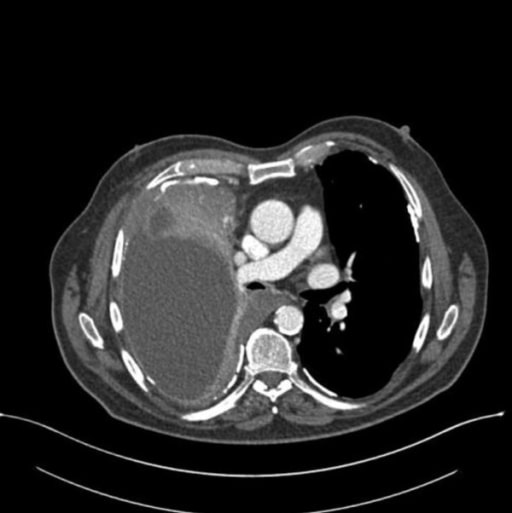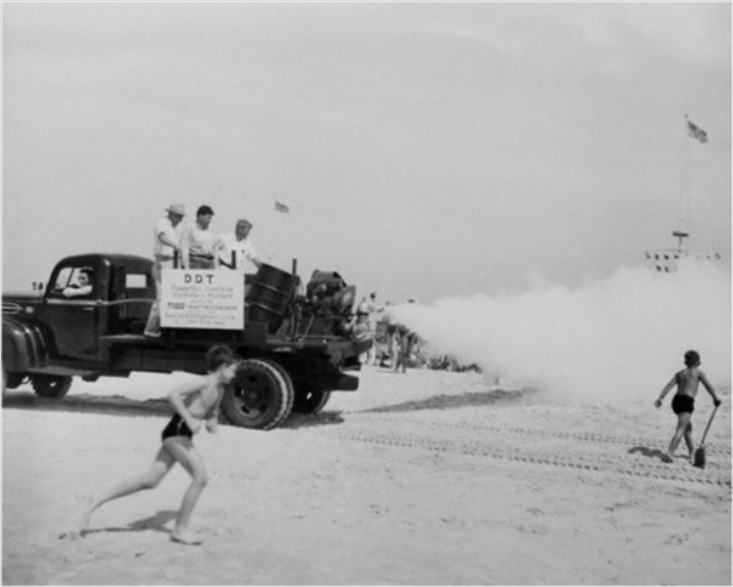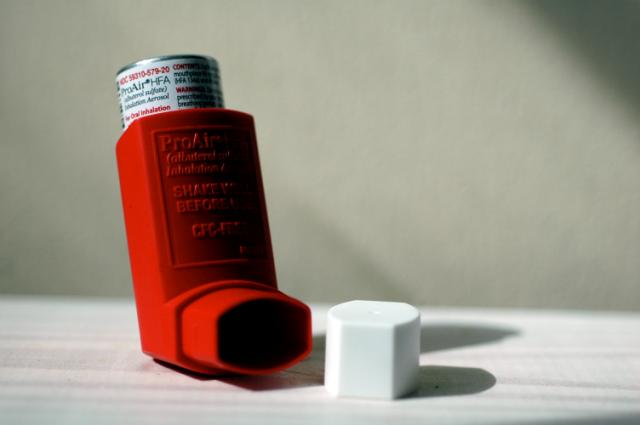Playlist
Show Playlist
Hide Playlist
Asbestos, PCB's, Herbicides & Pesticides – Toxic Substances
-
Slides DrugsOfAbuse Toxicology3.pdf
-
Download Lecture Overview
00:01 Asbestos is a common insulator. At one time, it was used almost exclusively as an insulator in the construction industry and you'll be surprised how ubiquitous this product is. I remember as a child, playing in construction yards, I remember playing with asbestos. That's how common it was. It is now banned in most countries. 00:23 And it's more relevant today in the destruction industry rather than the construction industry. 00:28 So, if you have a patient, who is involved in destruction of a property or renovation of a property, that was built prior to the 1940s, one of the things you really want to think about is asbestos insulation toxicity. 00:42 Now, the other thing that I want to mention and is often overlook is when we're reinsulating pipes for plumbing or replacing plumbing pipes, a lot of those plumbing pipes in airdocks were insulated with asbestos on the outside. 00:57 And so when they're tearing these things out, they release asbestos fibres into the air. 01:01 The acute symptoms are generally dyspnea or an asthma like syndrome. 01:07 The long term implication that we worried about is mesothelioma, which is a type of cancer. 01:16 Polychlorinated biphenyls or PCB's are used in the electrical industry. They're often used in insulation and in wire stripping. 01:26 They are poorly metabolized and highly persistent in the environment. 01:30 And they go through what's called predetor concentration. So, it's in small amount in animals that are at the bottom of the food chain, and they concentrate as you get higher and higher in the food chain. 01:42 Obviously because humans are what we call a top predator, and they concentrate the most in humans. 01:48 They often remain in the food chain for decades. They are most often associated with the folliculitis and keratosis. 01:57 Sometimes you can get a corneal keratosis as well, and you may see acne. 02:02 So, PCB's are an environmental issue that can cause toxicity, and even tiny amount in the part per million range can be quite toxic. 02:13 Herbicides are commonly used everywhere. Paraquat is the most commonly used herbicide in North America, and the second most commonly used herbicide in Europe. 02:22 It is used commercially by municipal governments and the construction industry. 02:26 Some regions of the world actually outlaw its use for private use, but those regions will still have municipal governments in the construction industry use them. 02:36 Paraquat and other herbicides are toxic when ingested. Generally in the environment, they are not toxic. 02:43 But when they are ingested, they can cause hematemesis or vomiting of blood and melena type stools. 02:49 If they are inhaled in large quantities, pulmonary fibrosis may occur. 02:54 So, I actually had a patient who developed pulmonary fibrosis from paraquat poisoning because he inhaled it. 03:01 He worked on a sprayer tractor and actually inhaled a significant amount and developed pulmonary fibrosis. 03:10 Treatment involves prevention of absorption. So that means, we give them charcoal or Fullers Earth or some type of compound that binds it in the stomach. We do not want to mix the stomach with extra fluids. 03:23 So, gastric lavage is not indicated in herbicide poisoning because it may actually enhance absorption because you're diluting it and making it easier for the stomach to absorb the liquid. 03:34 If ingested, 3 grams results in a 50 % mortality rate even when we dialyze these patients. 03:42 So, it's really important that we treat them quickly and treat them with the Fullers Earth or with activated charcoal. 03:50 Another herbicide is agent orange. It was a very important herbicide used in Vietnam It was commonly spread on dense foliage to expose the enemy soilders. 04:02 The manufacturing process was contaminated with dioxins in the 1970s, and thess agents stayed in the environment for a very long time The long term association has been with non-Hodgkin's Lymphoma I have a couple of Vietnamese patients, who were exposed to agent orange in the 1970s, and they now have non-Hodgkin's Lymphoma, and I follow them on a regular basis. 04:25 So, it's real and it will happen in your patients. You will see it. 04:29 Glyphosphate is commonly sold as RoundUp. 04:33 This is one of those agents that's actually purchased by individual for household use. 04:39 So, it's the most commonly used household herbicide in Canada, and one of the most commonly used in the United States. 04:47 It targets on amino acids in certain plants. Eye and skin irritation requires flushing. 04:54 So, it's important that people who are spraying their lawns with RoundUp wear eye protection, and preferably respiratory protection as well. 05:03 Another pesticide is commonly called deet. So, the most common product is Muskol. 05:12 But other products like Off and Raid will often have deet in it. 05:16 It causes an uncontrolled synaptic transmission through sodium channel activation. 05:22 That's important in terms of pesticides because it causes very quick death in these insects. 05:30 In humans, you can get a tremor progressing to seizures. And chronic exposure is tumorigenic in animals, and may be so in humans. There are some suspicions that it is contributing to Hodgkin's Lymphoma and possibly testicular cancer, but we're not really sure about that. 05:48 Now, deet is something that's very important to know with kids. 05:51 In kids, we were using Muskol which is a very strong deet formula, commercially available, mostly in Canada, but in Northen parts of the US as well, to treat children and prevent them from getting bit by mosquitos. 06:05 Unfortunately, because children have such a high surface area to volume ratio, they were absorbing a large amount of deet, and there were some concerns about hepatotoxicity. 06:16 So, be careful using deet products in children cause we're not sure what the long term implications are. 06:23 There is no treatment for deet intoxication. We just have to wait for them to process it naturally. 06:30 Other pesticides include the cholinesterase inhibitors. 06:34 Malathion and parathion are often used in trees to kill tent worms. 06:39 It is a cholinesterase. So, you end up with pinpoint pupils, sweating, salivation, bronchoconstriction, vomiting and diarrhea. 06:50 The CNS stimulation causes an increased alertness, so they're often hyperalert, they show up in the emergency department, sweating, pinpoint pupils, asthmatic, and then they become very depressed. 07:03 Depressed in the sense that they are not very responsive, not depressed in the mood sort of way. 07:10 They develop muscle fasciculations, weakness, paralysis, and death will often occur because they have respiratory failure.
About the Lecture
The lecture Asbestos, PCB's, Herbicides & Pesticides – Toxic Substances by Pravin Shukle, MD is from the course Toxicology. It contains the following chapters:
- Asbestos
- Polychlorinated Biphenyls
- Herbicides
- Pesticides
Included Quiz Questions
Mesothelioma is associated with exposure to which substance?
- Asbestos
- Tobacco
- Carbon monoxide
- Nitrous oxide
- Carbon dioxide
Research suggests that the herbicide 'Agent Orange' can cause which disease?
- Non-Hodgkin lymphoma
- Lung cancer
- Gastric adenocarcinoma
- Neuroblastoma
- Paget's disease
What is the mechanism of action of malathion?
- Acetylcholinesterase inhibitor
- Muscarinic acetylcholine receptor agonist
- Nicotinic acetylcholine receptor agonist
- Alpha-1 and alpha-2 agonists
- Chloride channel blocker
What is NOT a side effect of malathion toxicity?
- Dilated pupils
- Pinpoint pupils
- Bronchoconstriction
- Vomiting
- Diarrhea
Customer reviews
5,0 of 5 stars
| 5 Stars |
|
1 |
| 4 Stars |
|
0 |
| 3 Stars |
|
0 |
| 2 Stars |
|
0 |
| 1 Star |
|
0 |
very good, I liked the professionalism of Dr. Shukle and the key points delivered. high yield for memorization and text applications







